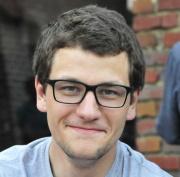In the same section
Post-Doc Researcher

Campus de la Plaine - Usquare - CP 270
Rue Fritz Toussaint, 8
1050 Bruxelles
-
PhD Thesis
-
"Algorithmic Confusion: A Transversal Study Of Computational Trade Mark Similarity" (Under supervision of Pr. Olivier Debeir and Pr. Julien Cabay)
This Ph.D. Thesis, funded by an ARC (Action de Recherche Concertée) at ULB (The "IPSAM – Adressing Intellectual Property Relevant Similarities In Images Through Algorithmic Decision Systems" project), is at the crossroads of Deep Learning and Intellectual Property (in particular, Trade Mark Law).
A comprehensive, transversal study is undertaken to evaluate how effectively current AI systems can translate the central aspect of the legal standard (the Likelihood of Confusion) into functional algorithms. By conducting a comparative analysis of two closed-source Trade Mark search engines provided by public Intellectual Property offices (namely the Benelux Office for Intellectual Property - BOIP and the European Union Intellectual Property Office - EUIPO), alongside an in-depth review of the state of the art algorithm, we assess the true capabilities of these systems and expose major methodological flaws in the development of those technologies.
Ultimately, this thesis raises the confusion around those algorithms and their ability to perform the ad-hoc similarity assessment at the heart of the confusion test, while also offering insights into the challenges and limitations of algorithmic regulation and the indispensable need for AI accountability.
-
Master Thesis
-
"Person Detection Using Time-Of-Flight Cameras and Machine Learning" (2019)
Some access-control gates used in public transportation stations reduce thefare evasion by counting the number of people present in an airlock, assessing that every user paid. Automatic Systems developed such a gate equipped with a Time-Of-Flight camera located above the gate, in order to evaluate its occupancy.
This thesis develops a detection algorithm meant to evaluate the occupancyof the gate using a sequence of depth-images, based on an image-segmentation neural network, followed by a labelization. The occupancy of each image is sim-ply passed through a mode to obtain the sequence’s global occupancy estimation.
A dataset acquired in Lille, in real-life settings, was split in order to train and evaluate the neural network, as well as evaluate the general performancesof the system. The neural network, based on a U-Net, achieved an Area Under Curve of the Precision/Recall curve of 0.94 with only 160k parameters, while the whole system achieved a 86% accuracy, with as little as 2.6% of sequences under-evaluated, those where fraud may occur. The training was done using 4770 depth-images, the validation of the segmentation network over 1362 images, and the system performance evaluation on 3317 sequences. -
Publications
-
LOADING... Please wait !
